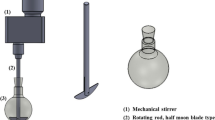Abstract
THE insolubilization of many dichromate-sensitized protein dispersions, notably albumins, gelatins, etc. after exposure to light, is well known and is the basis of most photo-engraving procedures1. Polysaccharides, such as starch and gum acacia, and polysaccharide derivatives such as methyl cellulose and, more recently, surface-hydrolysed cellulose esters2, similarly become insoluble when exposed to light in the form of thin, dry films.
Similar content being viewed by others
References
Bull, A. J., “Photo-engraving”, 91 et seq. (Arnold and Co., 1934).
Colt, U.S. Patent No. 2,448,861.
Stacey, M., and Swift, G., J. Chem. Soc., 1555 (1948).
Stacey, M., and Youd, F. R., Biochem. J., 32, 1943 (1938). Ingelmann, B., Acta Chem. Scand., 2, 803 (1948). Lockwood, A. R., James, A. E., and Pautard, F. G., Research, 4, 46 (1951).
Author information
Authors and Affiliations
Rights and permissions
About this article
Cite this article
PAUTARD, F. Photo-insolubilization of Dextran. Nature 171, 302–303 (1953). https://doi.org/10.1038/171302b0
Issue Date:
DOI: https://doi.org/10.1038/171302b0
- Springer Nature Limited





